
Snapshot
- 0-100 in less than three seconds
- 100kWh battery delivers a claimed 600km driving range
- Coming to Australia 2024
It’s fair to say Colin Chapman would struggle to come to terms with the Lotus Eletre. ‘Simplify, and add lightness’ was the Lotus founder’s mantra.
The Eletre is neither simple, nor light. Nevertheless, this electric-powered SUV is perhaps the most significant Lotus in the history of the British sports car manufacturer.
And not because of what it isn’t. But because of what it portends.
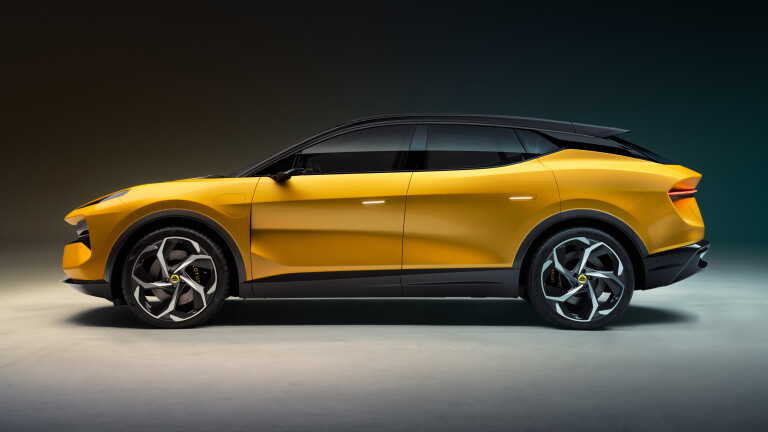
The Eletre (it’s pronounced ee-let-truh, and apart from the obvious play on ‘electric’, the word apparently means ‘coming to life’ in some eastern European languages) marks a key step in Lotus’s transition to becoming a full line electric vehicle manufacturer by 2030. And, along with the new Emira coupe – the last internal combustion-engined Lotus ever – it will spearhead the iconic brand’s rebirth in markets around the globe.
The Eletre will go on sale in Europe, the UK and China in 2023, and is scheduled to be rolled out to markets in the rest of the world, including Australia and the US, in 2024 and 2025.
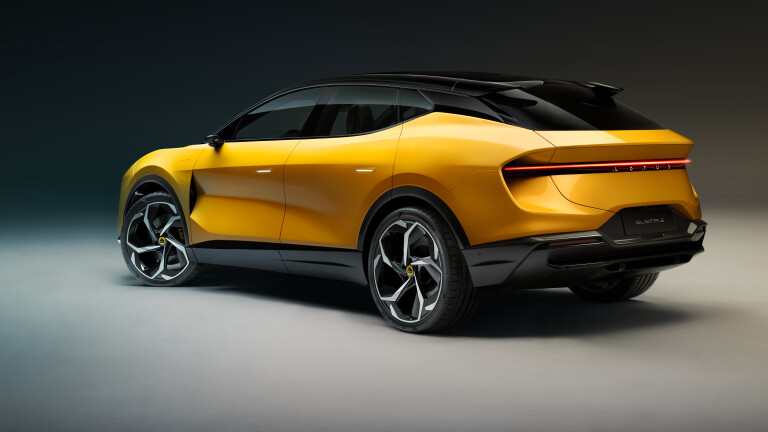
Powering the all-wheel-drive Eletre are compact e-motors with integrated controllers and reducers at the front and rear axles, producing a total of 447kW. Lotus says the Eletre will sprint from 0 to 100km/h in less than 3.0 seconds and hit a top speed of 260km/h.
A big 100kWh battery delivers a claimed 600 kilometres of driving range on the European WLTP cycle, and the Eletre’s 800V architecture means the battery can be topped up to deliver 400km in 20 minutes when the car is hooked up to a 350kW charger.
The Eletre is built on the all-new Lotus Electric Premium Architecture (EPA) developed jointly with its Chinese parent company, Geely – which also owns Volvo and Polestar and is the largest single shareholder in Mercedes-Benz, with a 9.7 per cent stake.
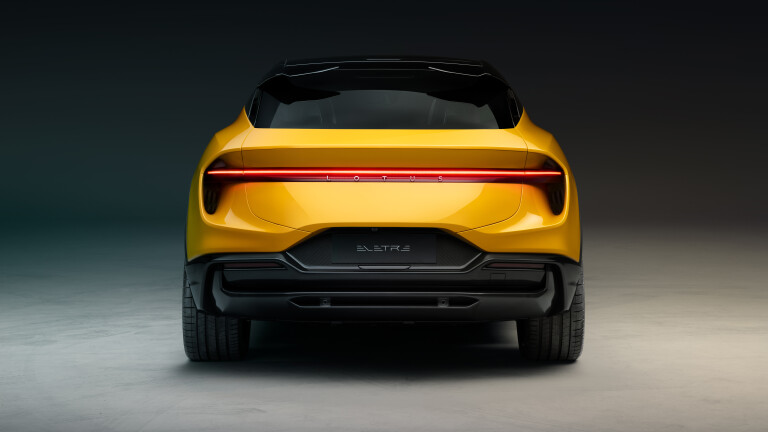
Lotus says EPA, which is different from the Electric Sportscar Architecture (ESA) it is working on with Renault’s Alpine brand, can be easily adapted to accommodate different battery sizes, motors, component layouts and intelligent driving technologies.
Despite being the tallest and heaviest car in the company’s history, the Eletre has been tuned to deliver the dynamics expected of a Lotus, says vehicle attributes and product integrity director Gavan Kershaw.
“Dynamically, the Eletre has been developed to deliver everything you would expect from a Lotus – outstanding ride and handling, highly communicative steering and exceptional driver engagement,” Kershaw says. “From a performance perspective, we know the world is watching, so there has been an obsession with getting everything just right.”
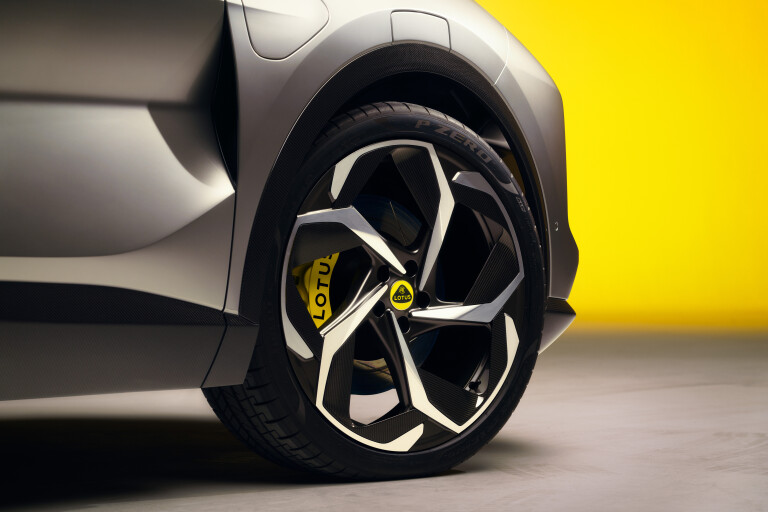
In addition to its 100kWh battery and compact dual-motors, the Eletre has multi-link air suspension with continuously variable damping all round. Active ride height and active anti-roll bars, along with rear-wheel steering and torque vectoring, will be available as options – along with 23-inch alloy wheels and carbon-ceramic brakes with 10-piston calipers.
Four different drive modes – Range, Tour, Sport and Off-Road – adjust steering and accelerator pedal response, along with damping rates and powertrain output. An Individual mode will allow drivers to mix and match some settings to suit their personal driving styles.
At 5103 millimetres, the Eletre is 421mm longer overall than a Jaguar I-Pace; longer, too, than a Tesla Model X – by 67mm. Its 3019mm wheelbase exceeds that of the Jaguar by 29mm and the Tesla’s by 55mm. This is not a small Lotus.
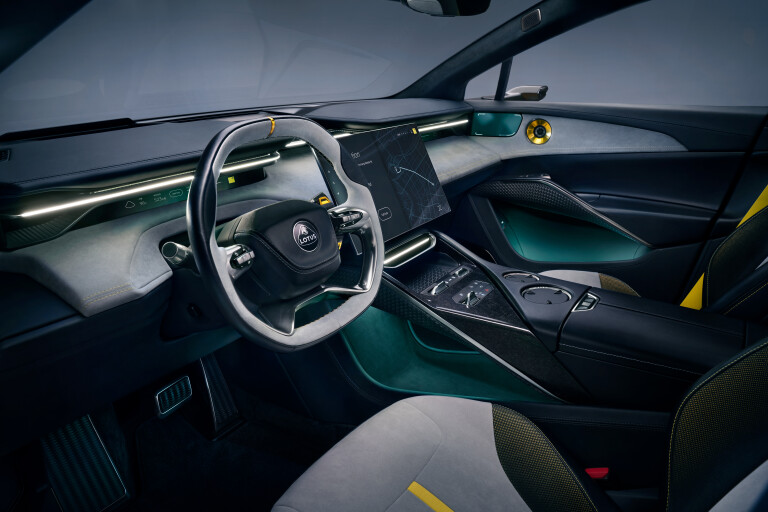
Designed under the direction of Ben Payne, head of design at the Lotus Tech Creative Centre in Warwickshire, England (a facility overseen by former Volvo and Geely design chief Peter Horbury), the Eletre has a cab-forward stance that recalls mid-engine Lotus sports cars, and dramatically sculpted aluminium panels.
Up front are daytime running lights mounted high at the leading edge of the bodywork above a full-width black section – concealing recessed headlights and hidden vents, which direct air up and over the hood and past the front wheels. Below that is an active grille made up of a series of interconnecting triangular panels that open to feed air into the radiator when the electric motors, battery pack and front brakes need cooling.
The heavily sculpted front doors allow air to flow from the vents on the trailing edge of the front guards. A pronounced haunch over the rear wheel rises to meet a roofline which gracefully falls away from the steeply raked A-pillars to floating D-pillars with integrated air blades to improve aerodynamic efficiency.

At the rear are two large vents bridged by a thin, full-width light bar, and a roof spoiler system comprising two carbon fibre winglets cantilevered from the roof cant rails. The winglets' function, just like a conventional, full-width spoiler, is to guide airflow over the rear window and on to a second spoiler that deploys out of the tailgate at speed.
All those vents recall the design language of the 1470kW electric-powered Evija hypercar Lotus unveiled in 2019. There’s function behind the form, says design chief Payne: Air channelled through the car – what Lotus describes as ‘porosity’ – as well as over, under and around it to help make the Eletre more efficient in terms of its driving range, speed and performance.
Lotus interiors have long tended towards being functional rather than premium. The Eletre changes all that.
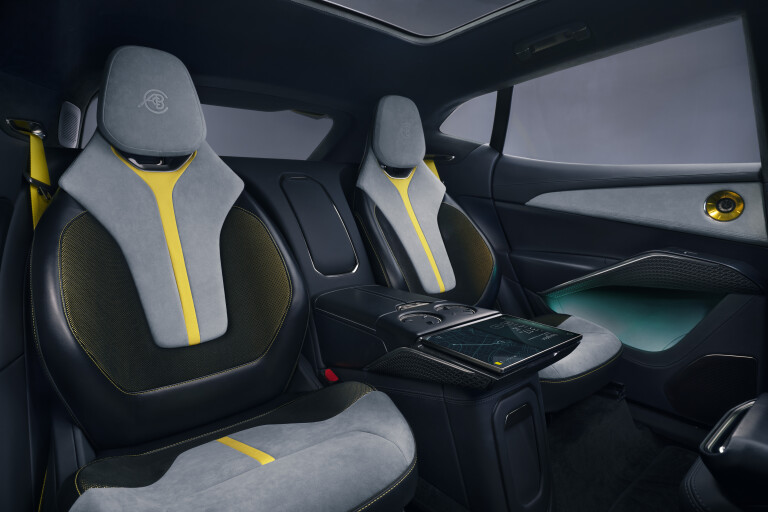
Available as a four- or five-seater, the Eletre has premium, highly durable man-made microfibres on the primary touchpoints and an advanced wool-blend fabric on the seats. The hard surfaces are carbon fibre, the fibres taken from the edge of woven carbon fibre mats used elsewhere by Lotus and reconstructed and compressed in a resin to create a marble-like finish.
The dash features a light blade that runs the full width of the car and changes colour to alert occupants to incoming phone calls, alterations in cabin temperature, and to the battery charge status.
There’s no big instrument binnacle behind the steering wheel. Instead, a 30mm-wide panel just below the light bar shows the driver key information. A similar panel on the other side of the dash shows the front seat passenger entertainment and location information.
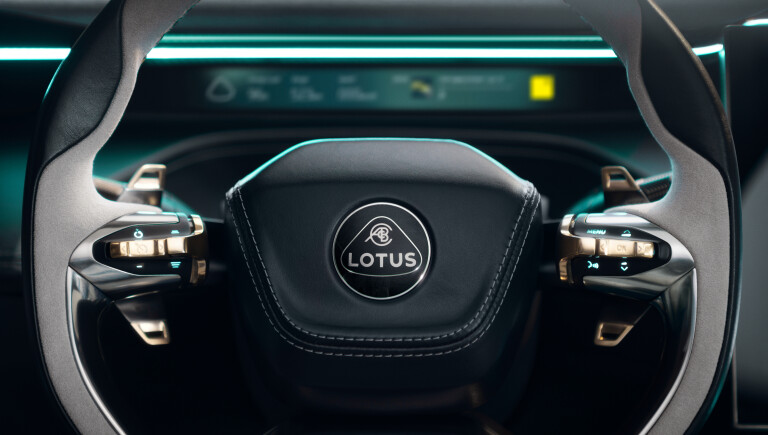
Between the two panels, at the centre of the dash, is a 15.1-inch OLED touch screen. Lotus says 95 per cent of the Eletre’s functionality can be accessed with no more than three touches on the screen.
Even so, certain key controls, such as; drive selection, climate control temperature settings, audio adjustment, and adaptive cruise control actuation, can also be controlled via simple, easy to use analogue switches.
The OLED screen automatically folds flat when not in use. Information can also be displayed to the driver via the standard augmented reality head-up display.

The standard audio system is from British premium manufacturer KEF and features an 800-watt, 15-speaker set-up. Those wanting even higher fidelity sound in their Eletres can upgrade to the 1500-watt, 23-speaker KEF Reference system, which features the first application of the company’s high-performance speaker and sub-woofer design in an automotive audio system.
The Eletre bristles with advanced technologies, including the world’s first deployable LIDAR system. The four LIDAR units – one at the top of the windscreen, one at the top of the rear window, and one on each front guard – are hidden when not in use. The rear-facing unit drove the development of the winglets at the rear of the Eletre’s roof: Eliminating the centre section of the spoiler not only saved weight, but also allowed the rear-facing Lidar to deploy when needed.
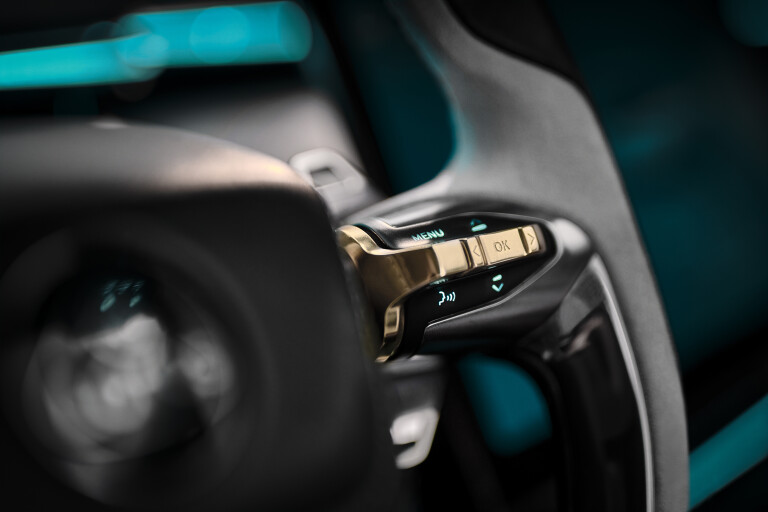
The Lidar system not only supports many of the Eletre’s advanced driver assistance systems, but will also enable “end-to-end” autonomous driving capability. What that means, says Lotus, is customers will be able to use their smartphone app to request their Eletre to drive to them autonomously from a nearby parking space, and then autonomously repark itself at the end of the journey.
Lotus says further autonomous driving capability can be added via over-the-air software updates, as and when it is allowed by local market regulations. Many of the Eletre’s other driver assist systems will also be able to have their features and capabilities enhanced via over-the-air updates.
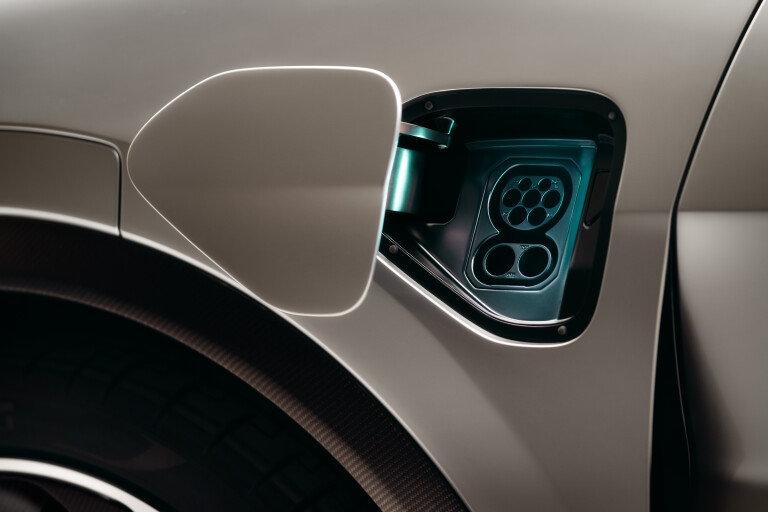
Yes, Colin Chapman would have struggled with the Lotus Eletre. But as Porsche and Lamborghini have learned, building a high-performance SUV means you can continue to build the sports cars that made you famous. Lotus, helped by Geely’s deep pockets, is simply following what is now a well-worn path.
“This car has the soul of a Lotus and the usability of an SUV,” insists Lotus managing director Matt Windle. “We’re confident it will delight performance car customers and offer a distinct alternative to the segment’s established players.”



COMMENTS